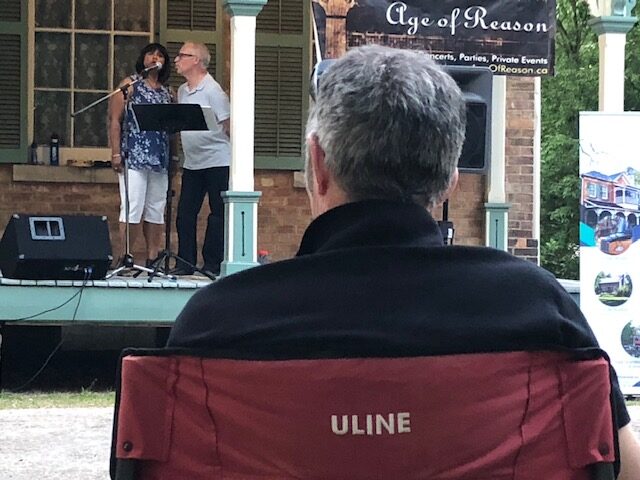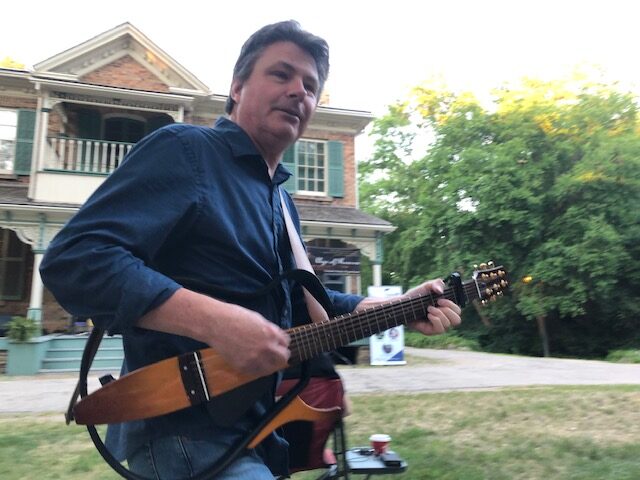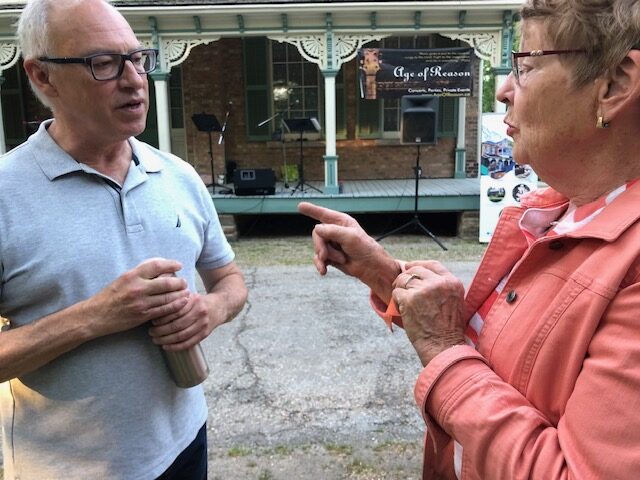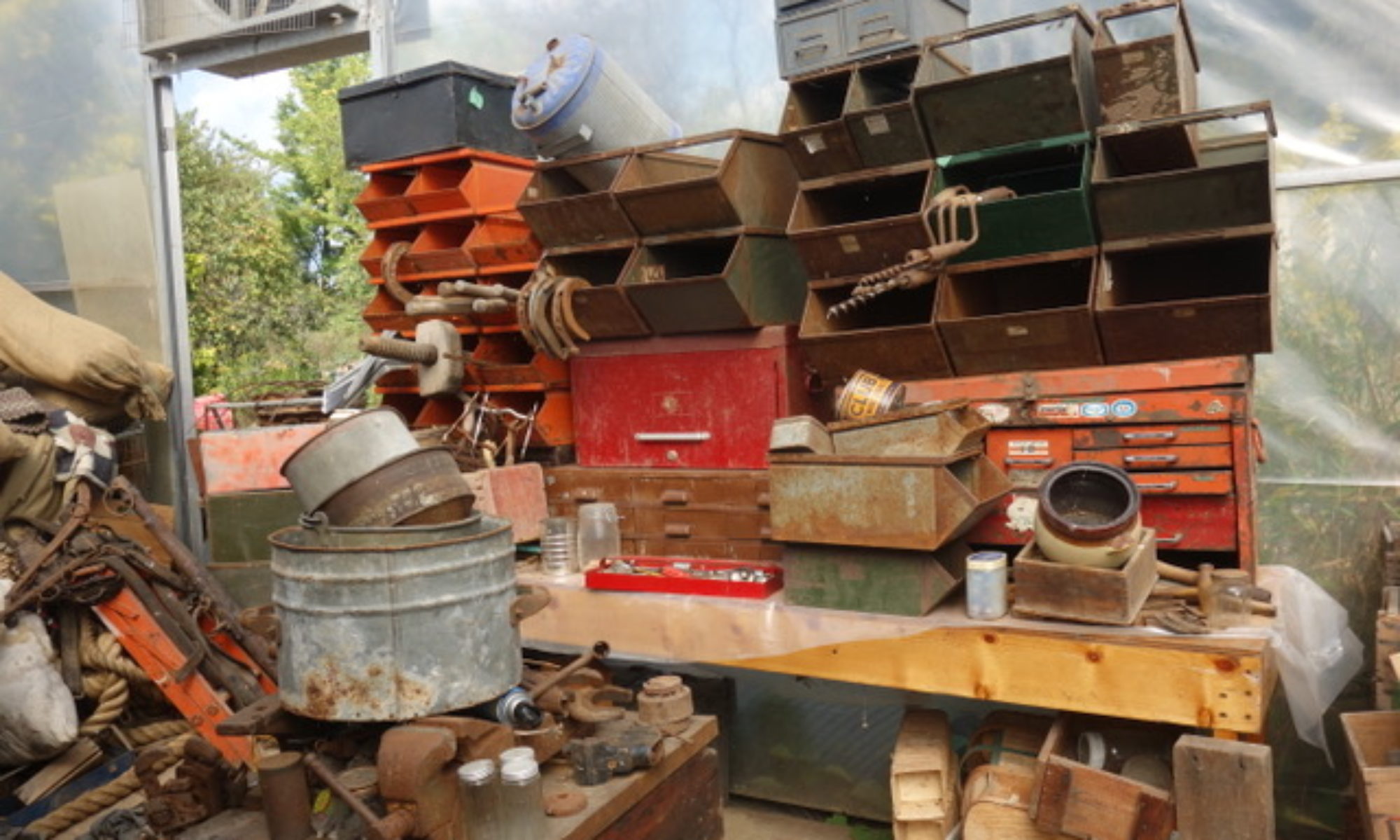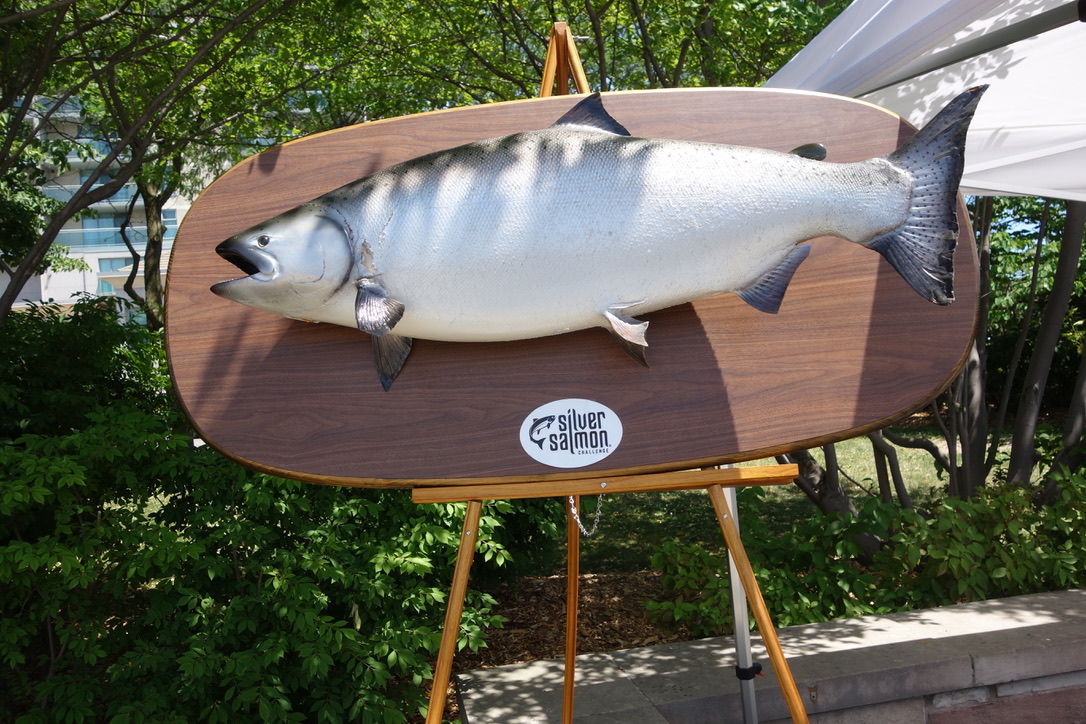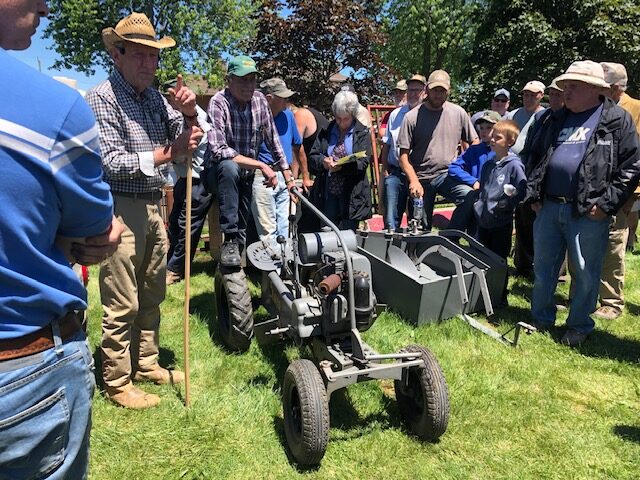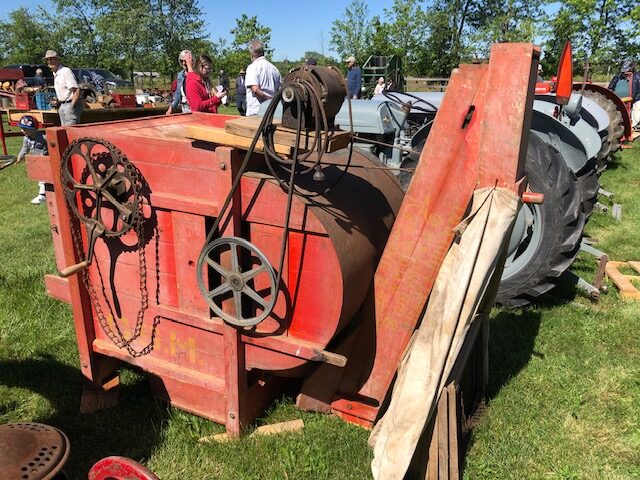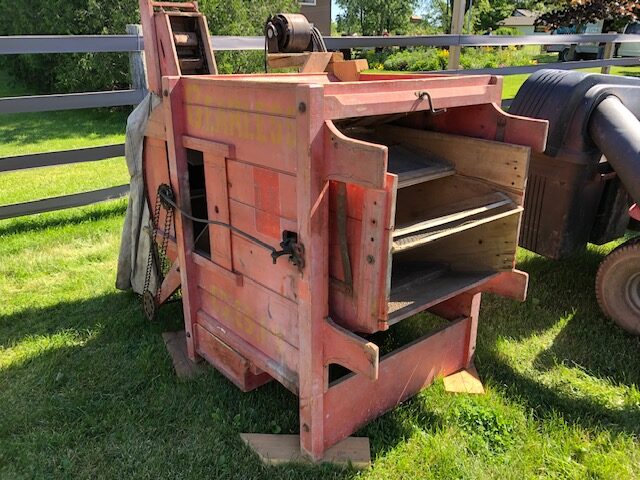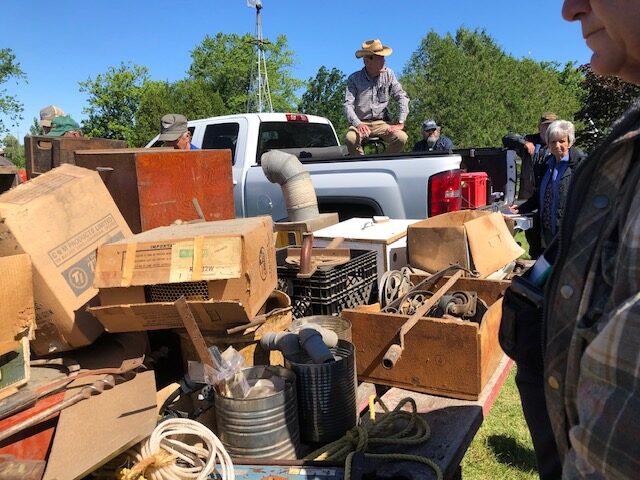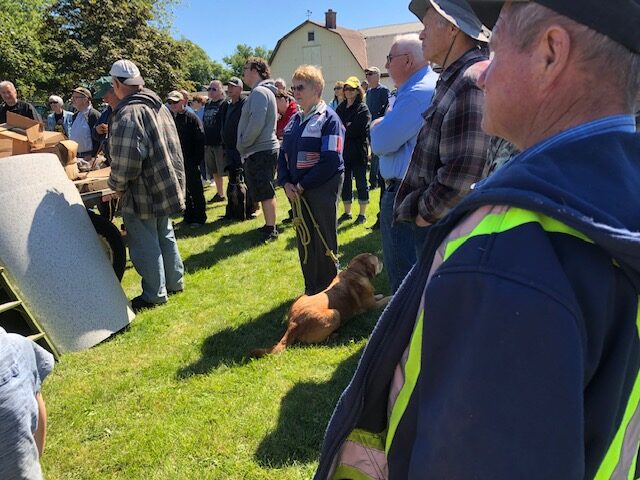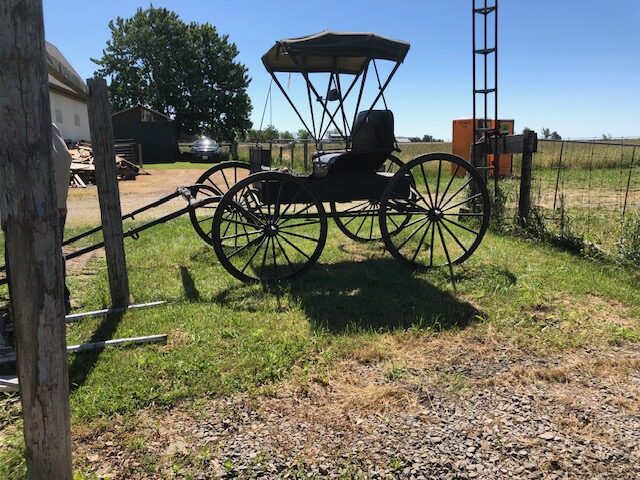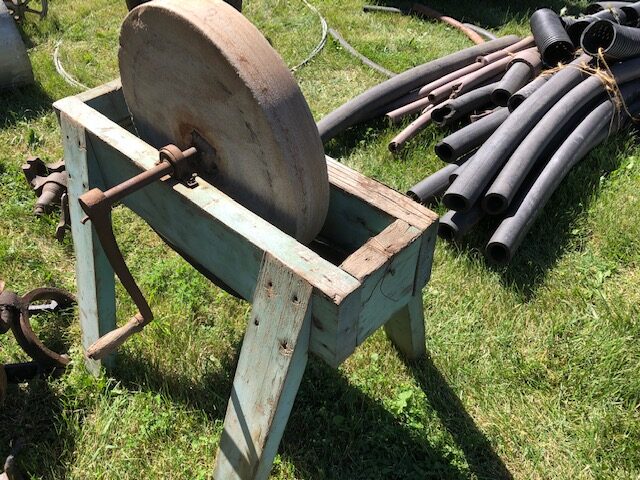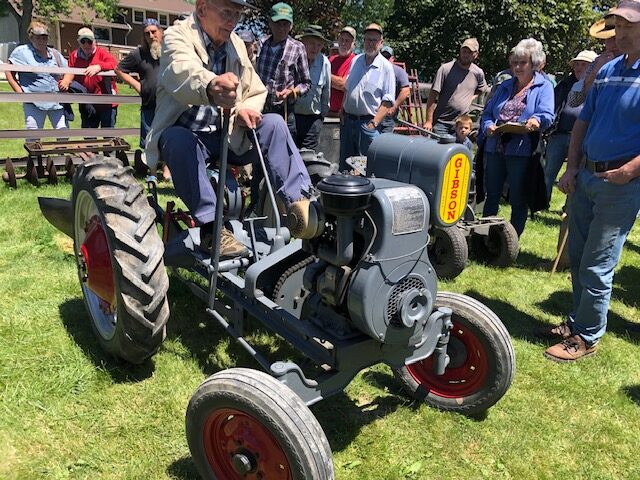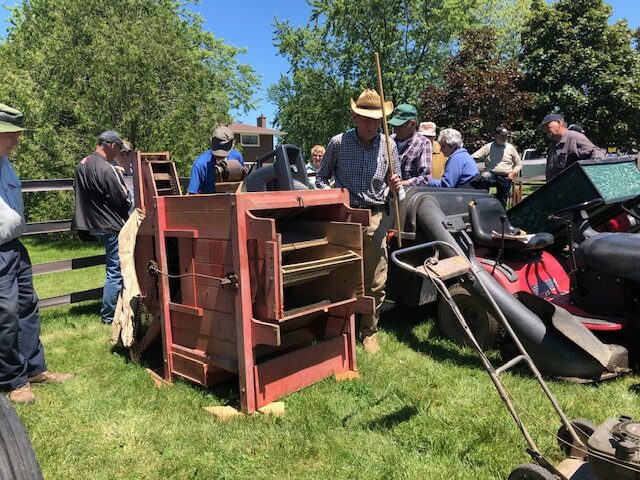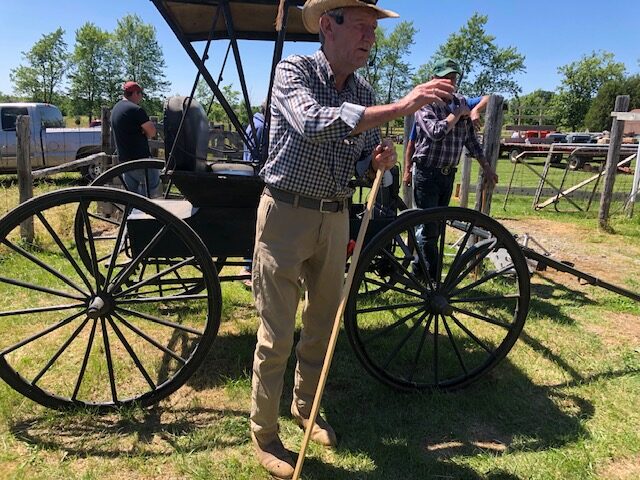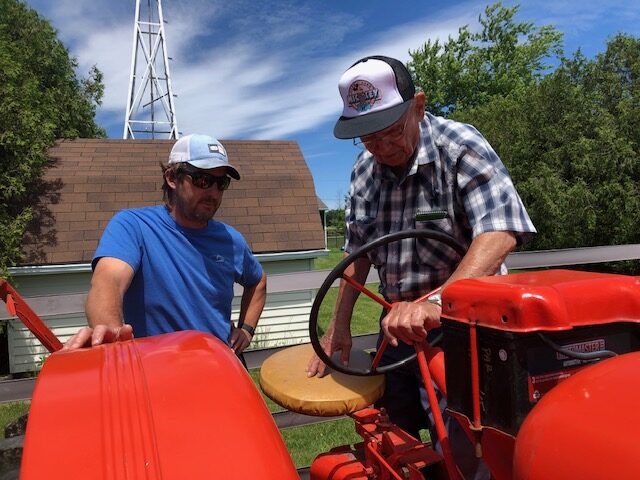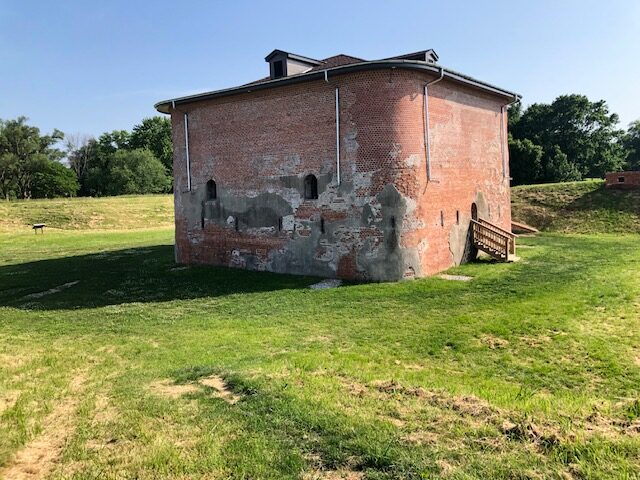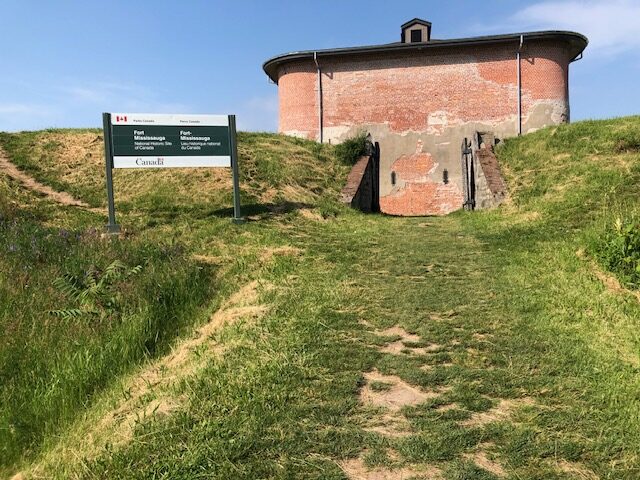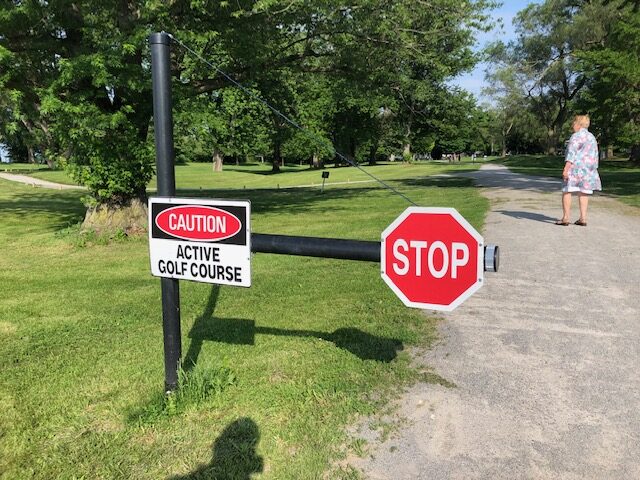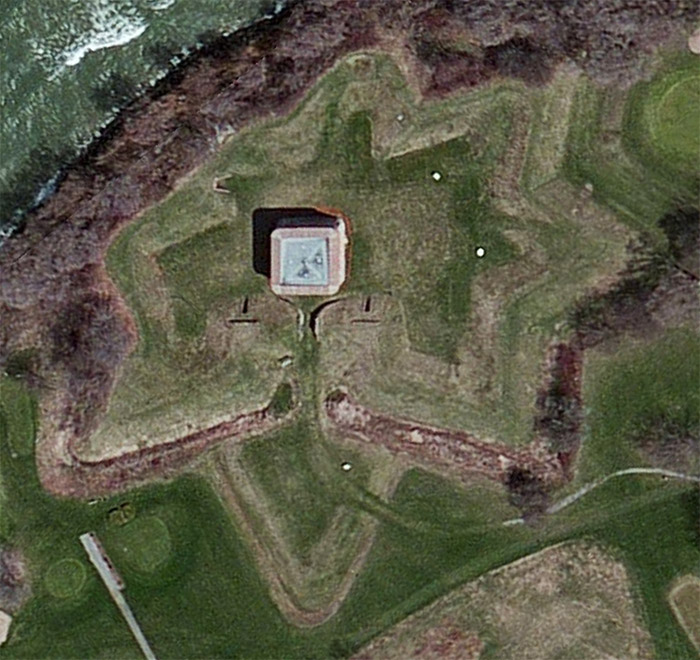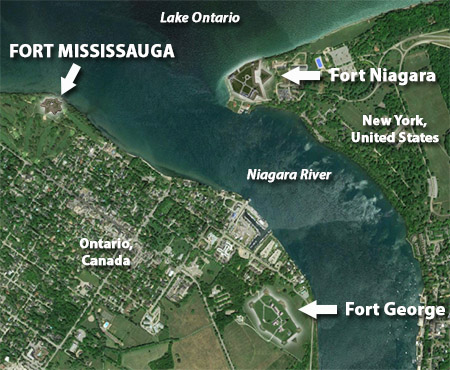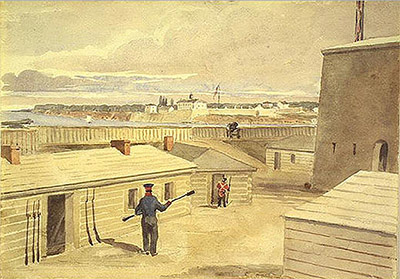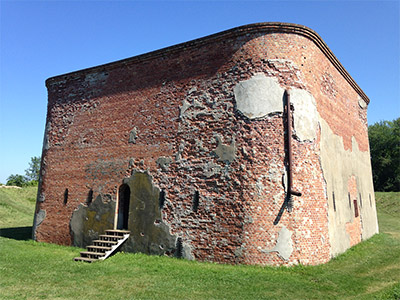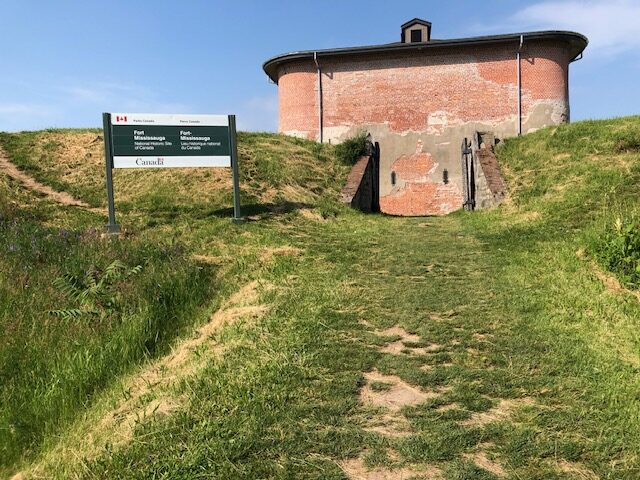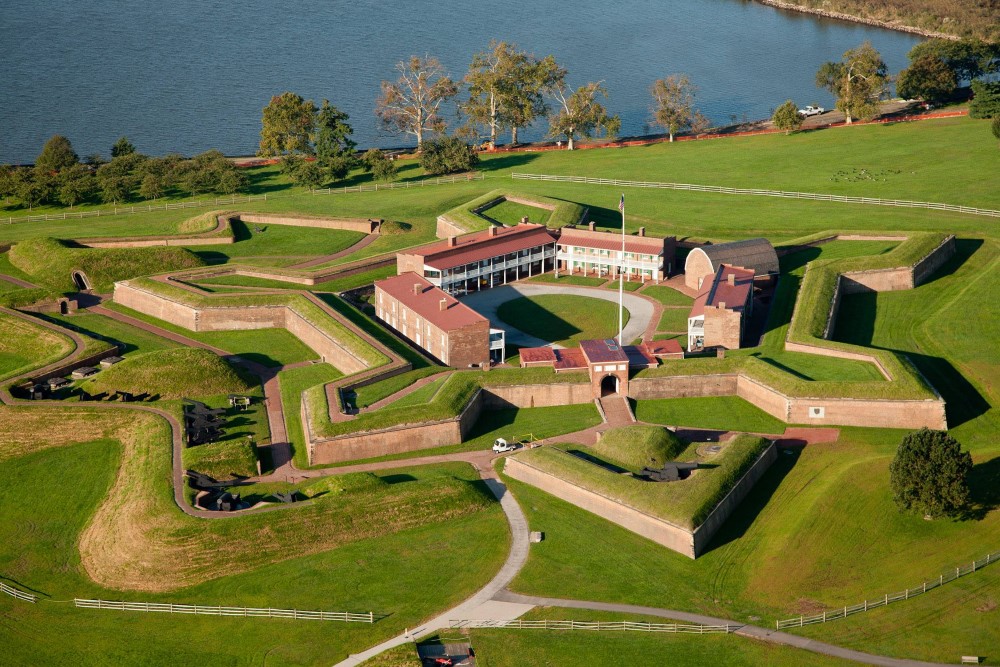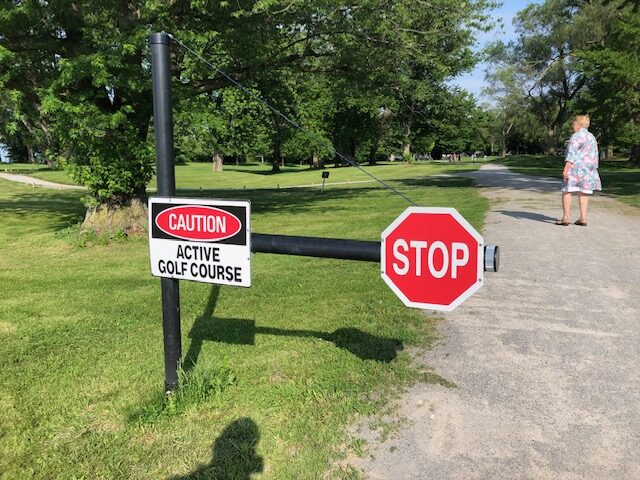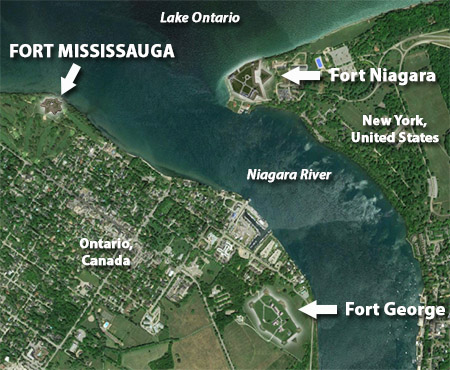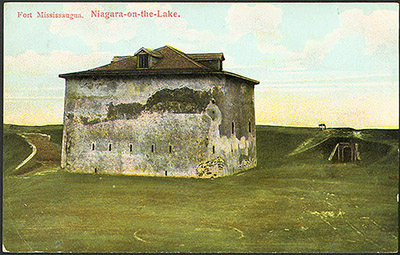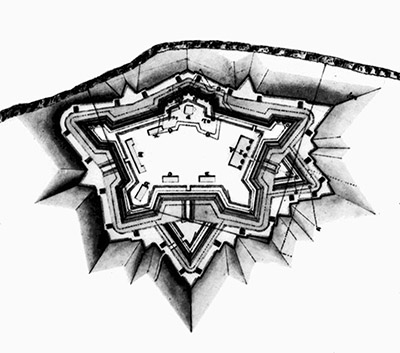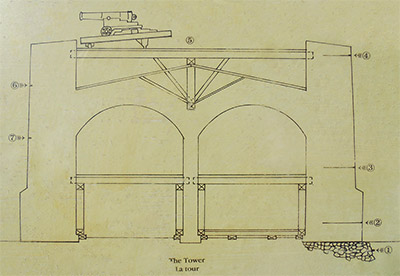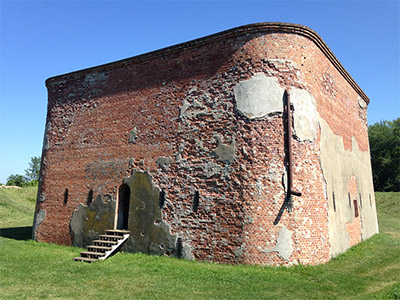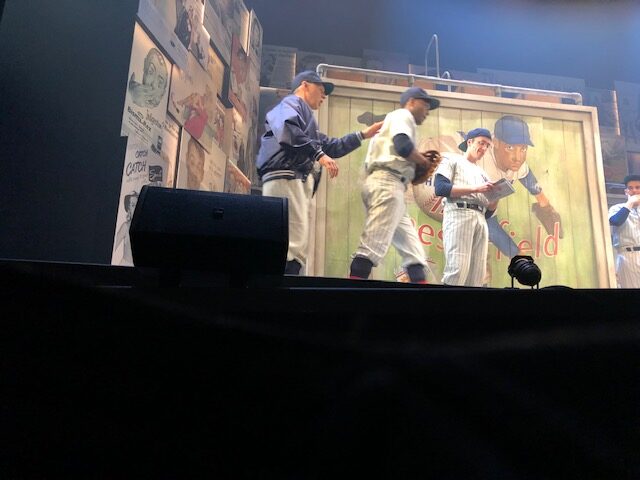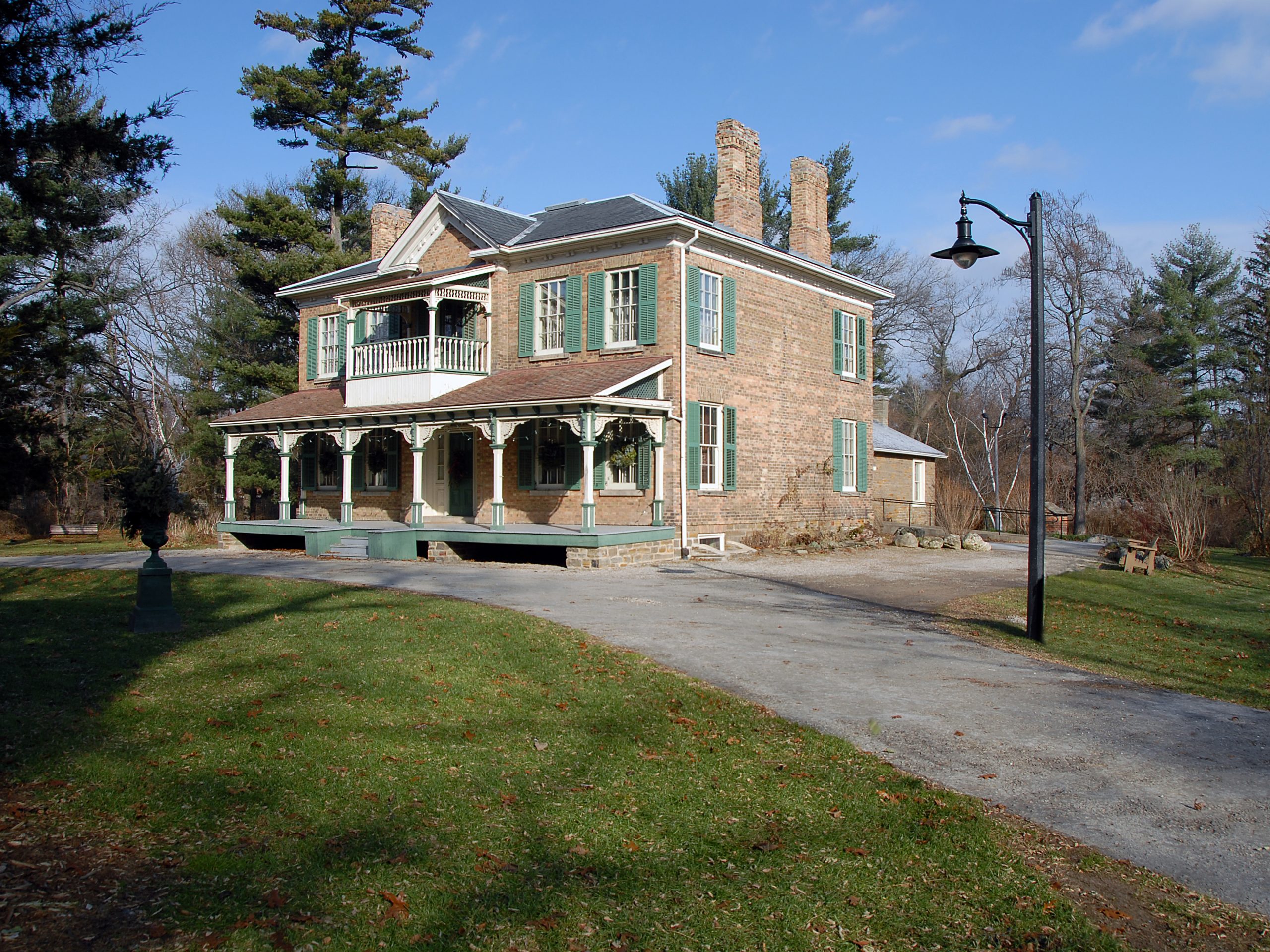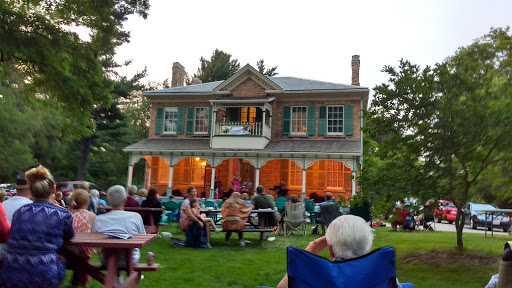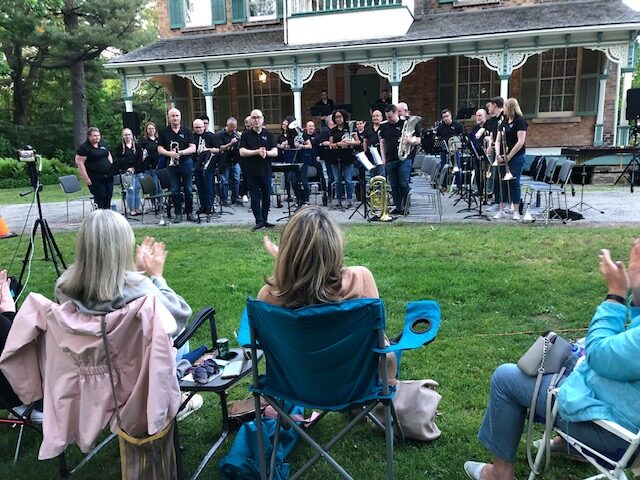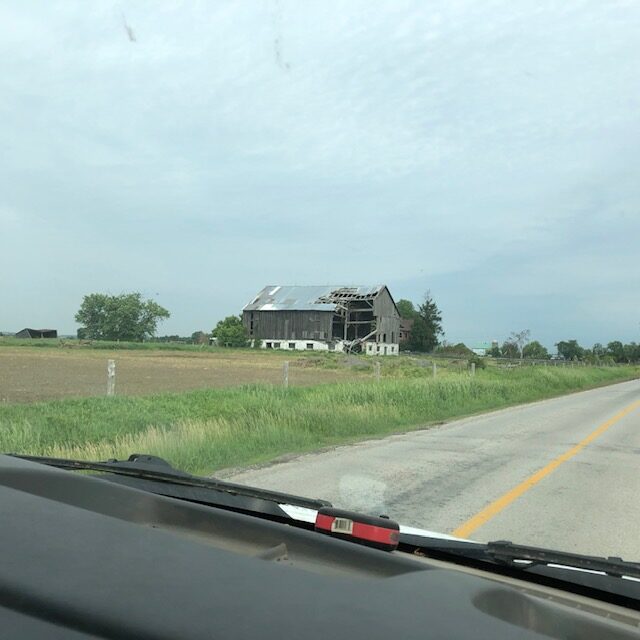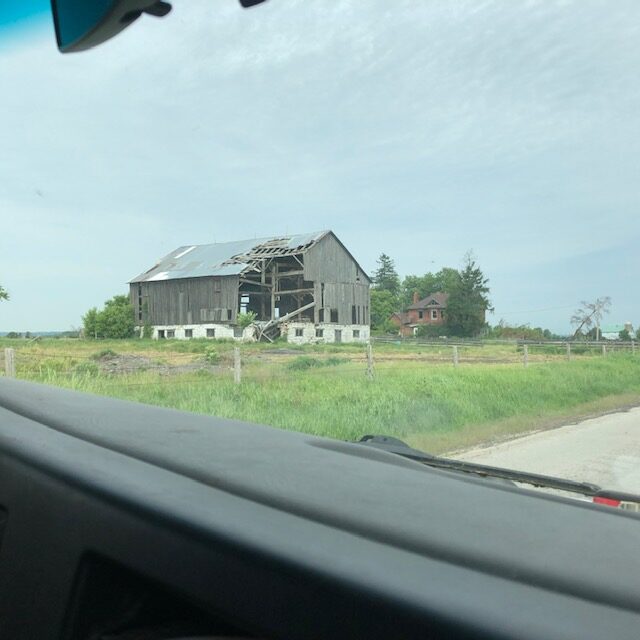EPISODE 598 ‘BLUEJAYS? NOPE, THE DAMN YANKEES”
alan skeoch
June 16, 2022
SOMETIMES IMPULSE PAYS OFF BIG TIME…DAMN YANKEES
ON impulse, Marjorie and I booked two front row tickets to see
The Damn Yankees at the Shaw Festival at $45 a seat. Cheap.
We did not know the story but relied on the Shaw Festival people
to provide first rate entertainment. We were not disappointed
even though the twists and turns of the plot were a little mystifying.
…Like Mr. Applegate was supposed to be the Devil. How
could that be when he was so funny, so capable of amusing contortions,
LIKE an affable, if dishonest, crook. I liked him. Who could like the devil?
Why did we like the production?. Because we really needed
a release from the dark days through which the our sister
nation is living right now. Trump has twisted Americs into a
Gordian knot which is hard to unravel. It has been years since
we have crossed the border into the USA. Blood, guns and
lies keep piling on with no end in sight.
The play Damn Yankees restored the America of 1955. A good
year just a decade after the end of a World War. Optimistic nation. The play Damn
Yankees is a lot of fun…full of songs and terrific dancing.
The stage is converted into a mobile baseball stadium
complete with a sweat swathed locker room.
Damn Yankees ended with a standing ovation from the audience
made amusing when the devil, Applegate, tried to crawl under
the curtain to corrupt the audience in a most amusing way.
Lots of sex…both innocent and manipulating kind. Captivating.
We came away from the theatre into the charm of one of
Canada’s great tourist centres…Niagara on the Lake.
About as sweet as a slice of ice cooled watermelon on a summer day,
alan
STORY LINE FOR DAMN YANKEES (NOT THAT YOU NEED IT)
SYNOPSIS (NOT THAT YOU NEED IT)
Sometime in the Future: Washington, D.C. Act I Meg and Joe Boyd are middle aged, and happily married. Meg knows that Joe is a good and faithful husband but that he isn’t always hers. For “Six Months out of Every Year” he, like millions of other men, belongs to baseball. He is a fan of the perennially losing Washington Senators and he hates the fact that those “Damn Yankees” are going to win the American League pennant again this year. He would do anything not to let that happen again. He would even sell his soul to the devil! Out of nowhere a suave man, Mr. Applegate, appears and makes Joe an offer. If Joe will give him his soul, Mr. Applegate (a.k.a. The Devil) will make Joe the great long hitter that the Senators so desperately need. Joe is, of course, concerned for Meg, but as he’s always wanted to be a ballplayer he gives in to the temptation. However, being the real estate salesman that he is, he negotiates an escape clause – if he decides that he doesn’t want to give his soul to the Devil by September 24, he can still have it back. Mr. Applegate reluctantly agrees. Joe writes Meg a farewell note – “Goodbye, Old Girl.” He is transformed into a younger, more vibrant Joe – Joe Hardy. Joe and Applegate leave to make Joe’s dream come true. Outside the ball field, four Washington players sing their philosophy of baseball and life. They may not have the skill to beat the Yankees but they have something else – “Heart.” Mr. Applegate enters with Joe and convinces Van Buren, the coach, to give Joe a tryout. Joe, shoeless because the previous Joe’s feet were much smaller, borrows a pair of shoes from another ballplayer. All of this is witnessed by a pushy reporter and Senators’ fan, Gloria Thorpe, who at Applegate’s invitation watches Joe’s skillful playing. His tryout is spectacular and Gloria offers to help catapult Joe Hardy to superstar status by naming him “Shoeless Joe from Hannibal, Mo.” Joe becomes irritated by all the press attention, particularly from Gloria. All he wants to do is play baseball and help the Senators win. More than all of that, he realizes how much he misses Meg. Applegate, sensing that Joe may change his mind about his soul, calls in his secret weapon: Lola, formerly the ugliest woman in Providence, Rhode Island. Lola can do anything – all it takes is “A Little Brains, A Little Talent.” Meanwhile, Joe misses Meg so much that he goes back home and convinces her to rent him a room – “A Man Doesn’t Know.” Meg’s bridge partners recognize the great Joe Hardy and are quite impressed. Out of nowhere Applegate appears to inform Meg that there is a new zoning law prohibiting the rental of rooms in private homes. Joe takes Applegate outside to send him away. Applegate quickly informs him that Lola is here and is dying to meet him. He explains that he isn’t interested. Thanks to Joe, the Senators are on a winning streak, and after a great game Applegate brings Lola in to meet him. He wants to get home but Lola has other things in mind – after all, “Whatever Lola Wants” . . . Joe succeeds in convincing Lola that where he should be is home with Meg. Applegate appears and chastises Lola for her failure to seduce him. The Chevy Chase Fan Club rehearses a song for a dinner saluting Joe Hardy – “Heart” – reprise. Prior to the dinner, a repentant Lola tells Joe that she’s on his side. Gloria, on the other hand, has just returned from Hannibal, Mo., and no one there has ever heard of Joe Hardy. Applegate tells Gloria emphatically that Joe Hardy is not Shifty McCoy, the bribe-taking ballplayer in the Mexican league. Meanwhile, the salute to Joe is about to begin, and Lola and one of the players, Sohovik, do their number – “Who’s Got the Pain?” Soon Joe is informed that the newspapers are about to hit the streets saying that he took a bribe. The crowd is in an uproar. Joe tries to calm them down. Van Buren informs him that the baseball commissioner has set a hearing for the next day, September 24, and if he can’t prove who he really is, he’ll be cut from the team. Act II In the locker room, the players worry about winning a game without Joe’s help. They must not be distracted by anything like women or Joe’s hearing, or women, or booze, or women – they have to think about “The Game.” Without Joe, the Senators lose the game. Joe is worried that he won’t be able to clear his name and that Meg might lose respect for him. He calls her and they meet. Without revealing himself, he asks her if she thinks he’s Shifty McCoy. She says no. She knows she’s a good judge of character. That’s why she knows the other Joe, her Joe will return to her. Joe assures her that he (the other Joe) is “Near to You.” At his swanky apartment, Applegate tells Lola of his plans to have the Senators lose so that Joe has to stay and play beyond the date that had been set. For her part Lola feels bad for Joe. Joe arrives to tell Applegate of his decision: he wants out. Today is the 24th. Applegate says it isn’t as simple as that, these transformations can only take place at the witching hour – midnight! Applegate tells Joe that if at five minutes to midnight he still wants out, so be it. Joe asks what he is supposed to do if the hearing is still going on. Applegate tells him to just ask to step into the next room and once through that door Joe Hardy will disappear forever. Joe agrees. Lola repeats the litanies that Applegate has taught her: “Never feel sorry for anybody, never feel sorry for anybody.” Distressed by Lola’s attitude and Joe’s decision, Applegate reminisces about a time when evil things were a lot easier – “Those Were the Good Old Days.” At the hearing Joe is vindicated, thanks to an impassioned speech by Meg and her bridge friends. However, his vindication comes just as the clock strikes midnight. It’s too late for Joe to become his former self. Lola, for spite, has slipped four sleeping pills into an ecstatic Applegate’s demon rum, so he won’t wake up until after the game tomorrow. Joe’s soul is lost, but at least the Senators will win the American League pennant. To celebrate this little bit of happiness, Joe and Lola go out on the town – “Two Lost Souls.” The next day Applegate awakens to find the game already in progress. He berates Lola for her “good” deed and then asks her what the score is, “4 to 3, Washington,” is her reply. Applegate assures her that Washington will lose the game even if he has to transform Joe in front of everyone. However, before that, he transforms Lola back to her former ugly self. At the game, Applegate and the ugly Lola watch as the Senators are about to clinch the pennant. Not being able to allow himself to be outwitted by Joe, Applegate transforms him as a ball is hit in his direction. The transformation takes place and the old Joe stumbles, but, at the last moment, he regains his balance and strength and catches the ball. The Senators win the game. Back at home the old Joe is welcomed by a relieved and happy Meg and despite the protestations of Applegate, Meg and Joe find the comfort they cherish in each other – “A Man Doesn’t Know.”
